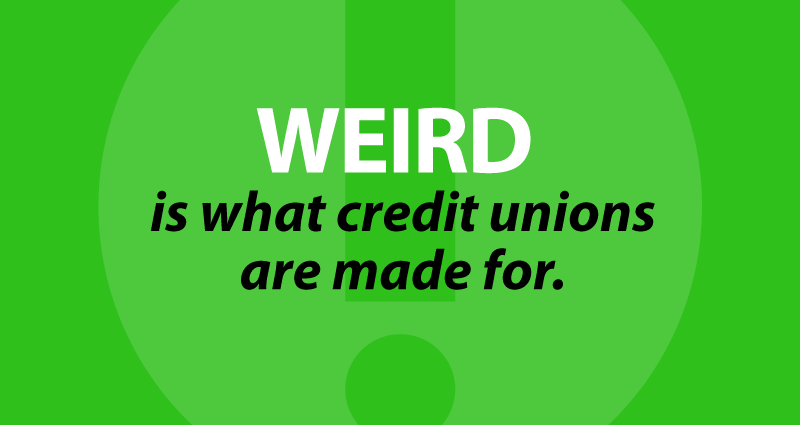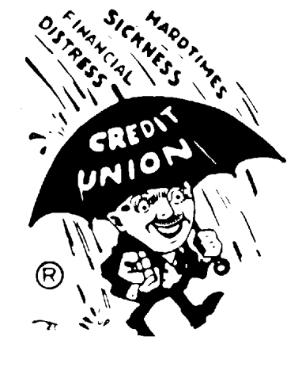
Taming the Weird Times Monster
The Weird Times monster is hairy, scary, and totally unpredictable, constantly sprouting freaky new tentacles to worry about.
Whatever your personal, political, or economic beliefs, we can all agree on one thing: the Weird Times monster has been tromping all over the place for the last few years, and it doesn’t look like he’ll be stopping any time soon.
How do credit unions and credit union marketers cope with extremes of uncertainty? Where do we fit in?
Weird is what credit unions are made for
Remember the little smiling umbrella guy from your CU History 101 class?

Sure, he’s a little corny (he’s a refugee from the 1920s, after all), but he makes a good point: credit unions are a powerful way for regular people to band together and help each other make it through tough times.
Credit unions will always be key to helping regular folks weather whatever storms are brewing. Tough times (and yes, Weird times like these) are exactly what credit unions are made for.
During the 2007-2009 recession, credit unions continued to lend, even when other financial institutions had stopped. And afterwards, credit unions also participated heavily in mortgage modification programs to keep thousands of members in their homes rather than foreclosing.
Same for every day’s crisis-of-the-day: credit unions are an important part of the solution.
Focus on emotions and answers
Weird Times create several specific emotional needs.
You’ll need to be ready to respond to these needs with product innovation, a strong, well-articulated brand, policy updates, transparency, clear, authentic messaging, humane policies, and maybe even a little tech.
The key is to think about the emotions and needs people will have, and use these insights to figure out how they relate to your brand, products, and marketing. Build your Weird Times strategy around the emotional needs you’ll fill.
Here are a few possible examples:
What are younger members thinking?
Younger adults are especially vulnerable economically, and they’re very worried about their short-term and long-term future. They’re also idealistic and compassionate, to a degree not seen in previous generations.
More to the point, they are extremely receptive to credit union ideals – if you can clearly communicate and show an authentic difference, they’ll get it. And they’ll respond.
What can you do to give young members a CU to believe in?
For example, do you need to beef up your content marketing to increase engagement? Or revamp your “write-a-check-and-forget” community service program around something your employees and members are actually passionate about?
Are you willing and able to lend to a first time car buyer, nurture a young family working toward buying a home in 2022, or work with members recovering from crushing medical debt? How can you tell their stories?
Safe and sound
This one’s obvious. Lots of worried folks will be in “batten down the hatches” mode; thinking about things like debt consolidation, lowering payments, or wondering whether they should keep their cars longer.
Some, of course, will be worried about what might happen if they can’t go to work or if their work slows down.
Older members (well, everyone, really) will be looking for messages of stability, and safety.
They’ll be turning to the credit union as a credible, reliable source of information they can use.
Shift your content engine into overdrive.
Credit unions have a lot of credibility, and can play an important role in making sure people understand what to expect and what they can do when things are getting Weird.
And don’t just regurgitate all the same stuff folks can get from the national news; address the local issues where people will need guidance and the credit union can make a difference.
Budget and leverage your time
It’s not just dollars and cents, don’t forget to plan how you’re going to use something even more scarce; staff time, energy, and attention.
For example, maybe it makes sense to focus more on steering the strategic ship and lean on your partners for more of the planning and production. Or maybe it’s time to get an outside perspective to help untangle a particularly knotty strategic threat.
- CU Numbers Need Marketing Love, Too - April 2, 2024
- Will it blend? The only CU fintech question that matters. - February 13, 2024
- Solving the CU marketing “now what?” problem - January 16, 2024
